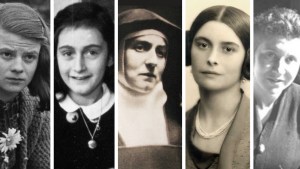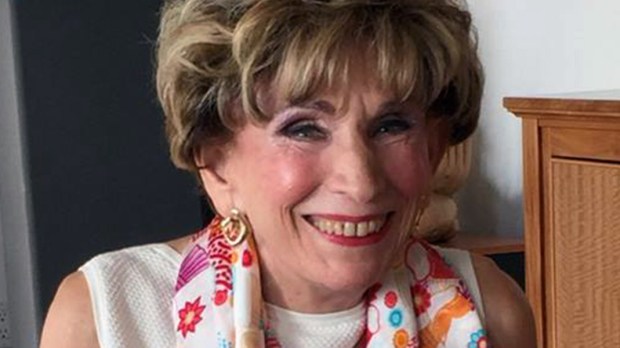Edith Eva Eger, a survivor of the Nazi concentration camps, carries one last memory of her mother: they are in line at the entrance to the camp, and Dr. Josef Mengele – the infamous “Angel of Death” – points her mother to the left, while Edith and her sister are pointed to the right. Thinking their mother was only going to take a shower, they did not say goodbye.
Edith was only 16, and the memory haunts her to this day.
Your mind is your space of freedom
One of her mother’s parting gifts was a simple idea that carried her through the hell of the next few years, until liberation came in 1945: We don’t know where we’re going. We don’t know what’s going to happen. Just remember, no one can take away from you what you’ve put in your mind.
This single idea – that what’s in our mind is the key to interior freedom, even in the midst of the concentration camp – would become the key to her endurance over the next few years. No matter how much misery and suffering surrounded her, penetrated her, burdened her, she could always find a place of interior freedom where her heart could soar.
After several years of hell, liberation did come, but she soon discovered that once she was outside the camp’s walls, an interior burden persisted. It was as if the interior space of freedom that had sustained her through Auschwitz and Birkenau had turned into a hidden room of guilt, anguish, and buried suffering.
Survivor’s guilt
Like many former concentration camp victims, at first she opted for total silence about the past, and was grimly determined to move on without looking back.
But as she discovered, the past can’t just be buried; trauma has its way of leaking around the edges and survivor’s guilt was a hidden motor behind everything she did.
Her accomplishments in the years after the camps were tremendous. She moved to the United States with her husband and baby as refugees, starting out in grinding poverty. She eventually earned a teaching degree and became a high school teacher, winning awards along the way.
Yet, no matter how many accolades, she won, she was haunted by a sense of unworthiness.
And she realized: “I am so obsessed with proving my worth, with earning my place in the world, that I don’t need Hitler anymore. I have become my own jailor, telling myself, ‘No matter what you do, you will never be good enough.'”
Over time, and partly through her friendship with fellow Auschwitz survivor Victor Frankl – author of the bestselling classic Man’s Search for Meaning – she realized she needed to open up about her past.
Talking about it became the first step to the interior liberation that had been pending for decades after her release from the camp.
It also became the key that would help her “liberate” many more people from the traumas that kept them in the grip of guilt, shame, and paralysis.
She went on to earn her doctorate in psychology, and drew deeply from her own experiences in charting a path forward for her patients – while also being careful not to project herself too much on them, and to respect the individual path each one had to take.
Two keys to interior healing
One of the first keys to her own interior liberation, she found, was to “take responsibility” for her feelings, to “stop repressing and avoiding them,” and also to stop blaming them on other people.
Only then can we take responsibility for our role in the dynamics of our closest relationships. Barring cases of abuse, she says we should not make our happiness dependent on what our loved ones do or fail to do. Instead, we should be responsible for our own joy.
A second step, she found, is learning how to take risks to reach a greater freedom on the other side. For Edith, the greatest risk of all was returning to Auschwitz, decades later, to walk that familiar landscape with an open heart. Not to relive the horror, but to accept, to forgive, to let go.
Returning to Auschwitz … to sing a song of freedom
The trip was difficult and she almost turned back at the last moment.
She was flooded by waves of feelings that came unbidden; as she herself acknowledges, trauma lodges in the body and can never be fully eradicated.
At their hotel, she and her husband were assigned to the same room Goebbels had occupied, and slept in the same bed he had used. The next day, she walked to the site of the Berghof — the Eagle’s Nest, Hitler’s old residence — now rubble.
There, amidst all the silent emotional turmoil, she had a moment of clarity: “I am alive. I made it.” She was finally able to let go, not to live in the shadow of the past, but to exult in the fact that she is free today, flourishing today.
And she was able to forgive – not just Hitler, but herself … for having survived when so many others didn’t.
Time doesn’t heal us, but our choices do
“Time doesn’t heal,” she wrote in The Choice. “It’s what you do with the time. Healing is possible when we choose to take responsibility, when we choose to take risks, and finally, when we choose to release the wound, to let go of the past or the grief.”
Even now, nearly 90 years old, Edith is often called to speak to Navy SEALs, POWs, and soldiers returning from combat in war zones like Afghanistan; many of the units that call on her to speak have seen high suicide rates among their soldiers.
After sharing her testimony, she tells them, “To run away from the past or to fight against our present pain is to imprison ourselves. Freedom is in accepting what is and forgiving ourselves, in opening our hearts to discover the miracles that exist now.”
And she writes to all of us: “I can’t heal you – or anyone – but I can celebrate your choice to dismantle the prison in your mind, brick by brick. You can’t change what happened, you can’t change what you did or what was done to you. But you can choose how you live now.”
“My precious, you can choose to be free.”
To learn more about Edith Eva Eger, visit her website or check out her book, The Choice: Embrace the Possible.

Read more:
5 Women from the Holocaust who give us hope (Photo gallery)

